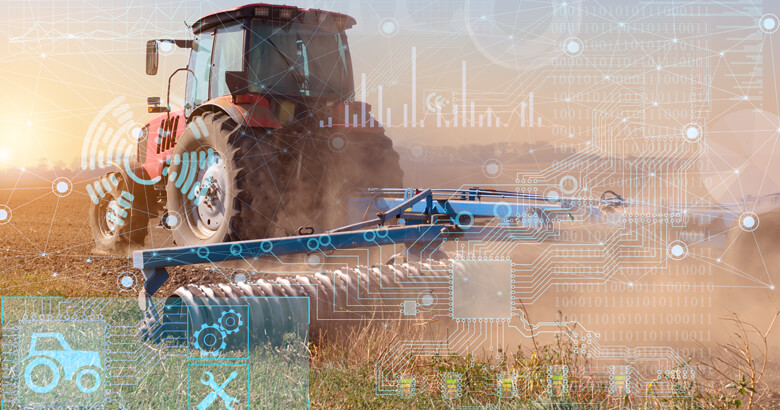5G to Accelerate B2B-Integration in (I)IoT Through a Smart Farming Pilot Project

So far, we have only known concepts such as smart cities or smart regions through mainly small, specialist projects. Expanding (I)IoT applications and data-driven services is difficult because they use a variety of communication standards. The availability, latency and bandwidth of today’s cellular networks also continue to vary and are often insufficient. However, this is where 5G is expected to bring a hoped-for breakthrough. As part of the 5G-PreCiSe joint project launched in 2022 and funded by the Federal Ministry of Digital Affairs and Transport (BMDV), SEEBURGER is helping develop a pilot project on the potential of using 5G for (I)IoT-related services in precision farming[1].
Smart Farming with 5G opens new prospects for B2B integration
In agriculture and agricultural technology, more than in almost any other area, we can see how digitalization is driving innovation. In crop production, for example, farmers are using sensors and AI to collate data on site-specific plant health or soil quality. However, the technical possibilities in agriculture are also growing to encompass tasks such as applying fertiliser more precisely and therefore more efficiently. This is not only about ensuring systems are compatible with one another. Instead, by pooling the data-driven services of all the B2B partners and authorities involved in the value chain, we have a much better basis for making decisions in the field on how to sustainably manage cultivated areas.
5G opens up new possibilities for smart farming
The goal is to use 5G to network the information base of systems and services in real time. This fount of information has hardly been used in smart farming (SF) up to now. However, networking it would allow the use of simulation or AI models for agricultural machines or plant growth to be used in new data-based products. The challenges are in getting the existing OpenData platforms, systems and data spaces smoothly interacting with each other through a 5G edge-cloud network.
BMDV pilot project 5G-PreCiSe
The 5G-PreCiSe project started at the beginning of 2022. Participants include the agricultural machinery manufacturer Rauch Landmaschinenfabrik GmbH from Germany’s Baden region, and Robert Bosch GmbH with its (I)IoT-based service platform NEVONEX. Sensor data on soil, environment and plants as well as machine data are collected via an edge cloud architecture. Once this is combined with simulation models and further data such as satellite images, it’s possible to calculate things like exactly how much fertiliser the machine needs to spread on the area it’s currently driving through. This is then passed on to the tractor. A project aim is to flexibly integrate further services and explore a new mesh approach to see if this is suitable for real-time 5G applications.
Focus on integration
SEEBURGER is supporting this pilot project with its over 35 years of experience in data and system integration. We are involved in two main areas:
- Providing and integrating data into the applications used or built upon in the project.
- Data analysis/data mesh mechanisms, which are being completely redeveloped using GPU edge and cloud based data processing on a GPU.
SEEBURGER’s goal is to develop and evaluate an integration concept for smart farming to connect the various systems and (I)IoT landscapes involved in cross-company processes. The new approaches that result from this will then be made available to other cross-sector solutions.
5G immensely increases the ability for IoT/(I)IoT devices to interact. This means that data-driven services can contribute even more to value creation than before, strengthening the importance of networking and integration in the B2B sector.
[1] Pilotproject 5G-PreCiSe: https://www.5g-precise.de/ (last accessed on 15 September 2022).
Source: https://blog.seeburger.com/5g-to-accelerate-b2b-integration-in-iiot-through-a-smart-farming-pilot-project/
 industry-trend6.com
industry-trend6.com

The new approaches that result from this will then be made available to other cross-sector solutions.